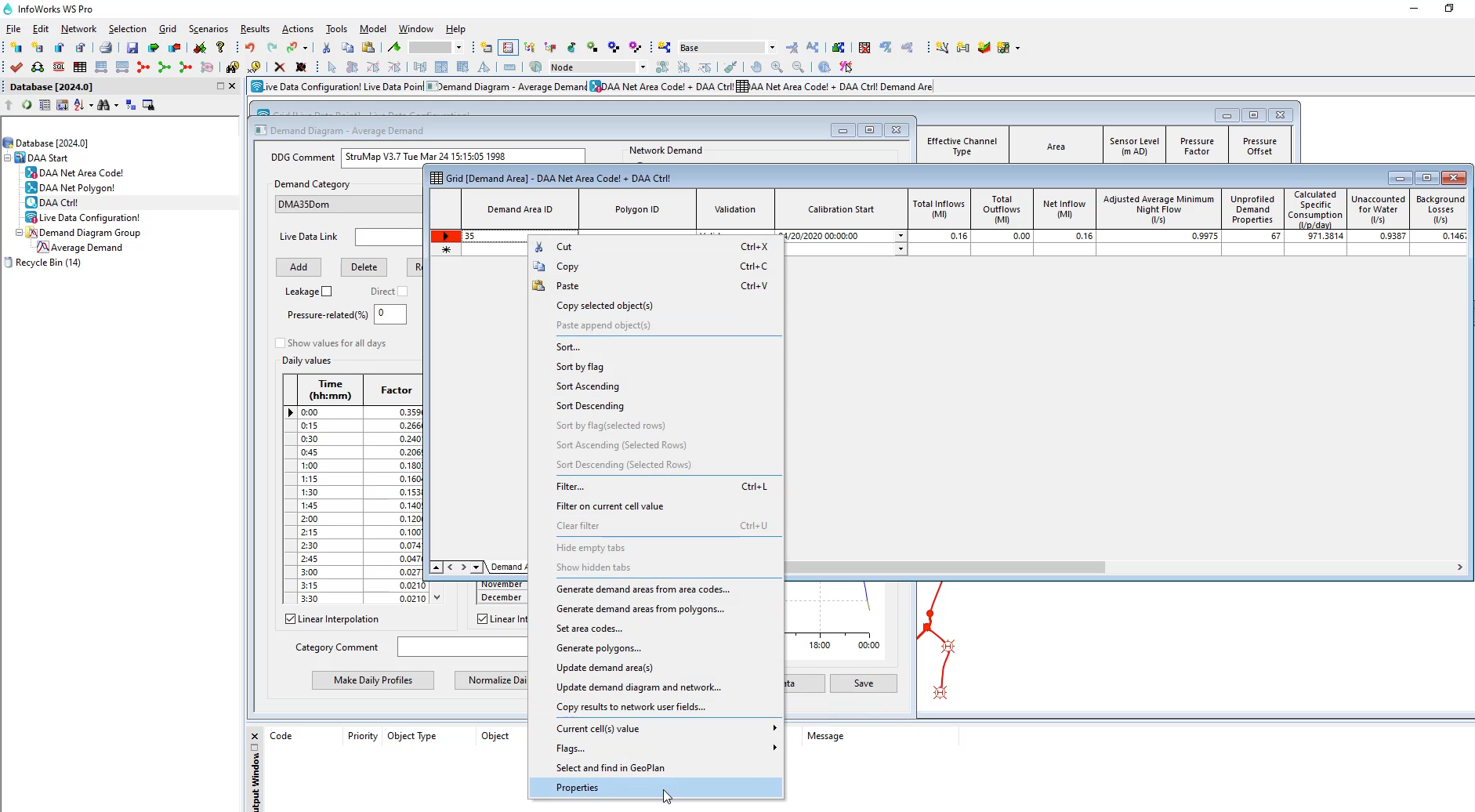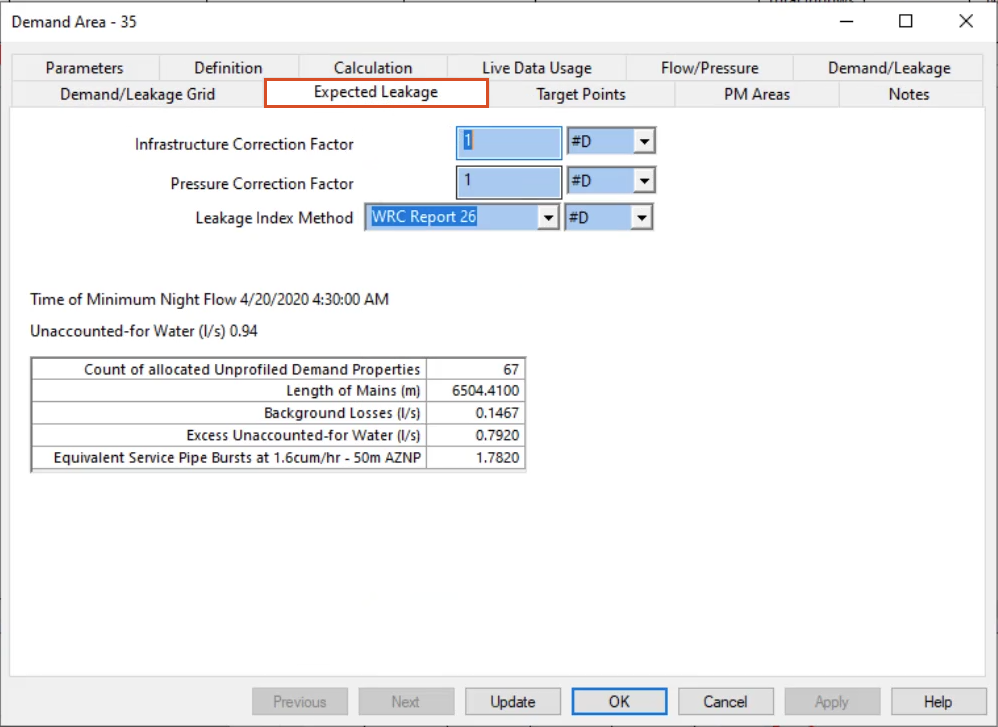& Construction

Integrated BIM tools, including Revit, AutoCAD, and Civil 3D
& Manufacturing

Professional CAD/CAM tools built on Inventor and AutoCAD

Integrated BIM tools, including Revit, AutoCAD, and Civil 3D

Professional CAD/CAM tools built on Inventor and AutoCAD
Any referenced datasets can be downloaded from "Module downloads" in the module overview.
Transcript
00:04
In info works.
00:05
WS pro a demand area analysis provides data that allows users to
00:09
review the current demand for water and project future potential demand areas.
00:15
After generating demand areas from area codes with the demand area grid open,
00:20
you can view and edit the parameters of the
00:22
expected leakage calculation and review the results of the calculation
00:26
from the grid right click demand area 35 and select properties.
00:31
The demand area 35 dialog box appears which
00:34
contains the properties for this specific demand area
00:38
to view the results as a graph open the expected leakage tab
00:44
the infrastructure correction factor ICF field displays a factor
00:47
that indicates the relative condition of the mains.
00:51
The expected range is between 0.1 and two where
01:01
The pressure correction factor PCF field displays a factor that is used to correct
01:06
the AZN P or average zone night pressure to a standard 50 m.
01:12
The expected range is between 0.1 and three.
01:16
If a default value is chosen,
01:18
then the value of the PCF will be
01:20
calculated according to the chosen leakage index method.
01:25
The value for A
01:26
and P is taken from live data where available.
01:29
Otherwise the simulation results will be used.
01:33
The leakage index method uses either leakage indices or
01:36
the 1.5 Power Law to calculate the pressure correction factor
01:41
in the table.
01:41
Both background losses and equivalent service pipe bursts are
01:45
calculated using the infrastructure and pressure correction factors.
01:49
The number of props and the length of mains
01:52
reviewing expected leakage calculations allows you to ensure reliable and
01:57
efficient service across all points within a demand area.
Video transcript
00:04
In info works.
00:05
WS pro a demand area analysis provides data that allows users to
00:09
review the current demand for water and project future potential demand areas.
00:15
After generating demand areas from area codes with the demand area grid open,
00:20
you can view and edit the parameters of the
00:22
expected leakage calculation and review the results of the calculation
00:26
from the grid right click demand area 35 and select properties.
00:31
The demand area 35 dialog box appears which
00:34
contains the properties for this specific demand area
00:38
to view the results as a graph open the expected leakage tab
00:44
the infrastructure correction factor ICF field displays a factor
00:47
that indicates the relative condition of the mains.
00:51
The expected range is between 0.1 and two where
01:01
The pressure correction factor PCF field displays a factor that is used to correct
01:06
the AZN P or average zone night pressure to a standard 50 m.
01:12
The expected range is between 0.1 and three.
01:16
If a default value is chosen,
01:18
then the value of the PCF will be
01:20
calculated according to the chosen leakage index method.
01:25
The value for A
01:26
and P is taken from live data where available.
01:29
Otherwise the simulation results will be used.
01:33
The leakage index method uses either leakage indices or
01:36
the 1.5 Power Law to calculate the pressure correction factor
01:41
in the table.
01:41
Both background losses and equivalent service pipe bursts are
01:45
calculated using the infrastructure and pressure correction factors.
01:49
The number of props and the length of mains
01:52
reviewing expected leakage calculations allows you to ensure reliable and
01:57
efficient service across all points within a demand area.
In InfoWorks WS Pro, a demand area analysis provides data that allows users to review the current demand for water and project future potential demand areas.
To view and edit the parameters of the expected leakage calculation:


How to buy
Privacy | Do not sell or share my personal information | Cookie preferences | Report noncompliance | Terms of use | Legal | © 2025 Autodesk Inc. All rights reserved
Sign in to start learning
Sign in for unlimited free access to all learning content.Save your progress
Take assessments
Receive personalized recommendations
May we collect and use your data?
Learn more about the Third Party Services we use and our Privacy Statement.May we collect and use your data to tailor your experience?
Explore the benefits of a customized experience by managing your privacy settings for this site or visit our Privacy Statement to learn more about your options.